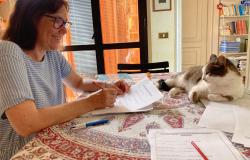For many, the writer Charles Dickens is synonymous with the smog-filled London of Victorian England, a city he was able to capture so skilfully in his satirical works highlighting the plight of the trapped working classes. Resting peacefully now in Poet’s Corner, Westminster Abbey, amongst other renowned writers, playwrights and poets, it is difficult to imagine that his skin once felt the intense, penetrating heat of an Italian sun.
 It is, indeed, a lesser-known fact that Charles spent the best part of a year in Italy from 1844-5. Born in the southern coastal city of Portsmouth in 1812, the author’s childhood was blighted by hardship and poverty with Charles having to leave school to work in a factory for three long, desperate and lonely years. This experience, which instilled in him a determination to succeed, led to a career as a newspaper reporter and subsequently, a writer. Having acquired wealth, yet understanding only too well the hardships of poverty, he became involved with Mazzini’s school for poor Italian children in 1841, which was located in London’s Hatton Garden. Exiled in London, Giuseppe Mazzini, the politician, journalist and activist, was a key figure in the unification of Italy.
It is, indeed, a lesser-known fact that Charles spent the best part of a year in Italy from 1844-5. Born in the southern coastal city of Portsmouth in 1812, the author’s childhood was blighted by hardship and poverty with Charles having to leave school to work in a factory for three long, desperate and lonely years. This experience, which instilled in him a determination to succeed, led to a career as a newspaper reporter and subsequently, a writer. Having acquired wealth, yet understanding only too well the hardships of poverty, he became involved with Mazzini’s school for poor Italian children in 1841, which was located in London’s Hatton Garden. Exiled in London, Giuseppe Mazzini, the politician, journalist and activist, was a key figure in the unification of Italy.
The financial advantages of living abroad, his need to recuperate physically and mentally from the relentless production of novels and his interest in Italian affairs led Dickens to plan a trip to Italy for himself. On 2 July, 1844 he set off with his wife Kate, her sister Georgina and his five children, all led by the capable Louis Roche who had been hired as a guide and organiser for the trip. After making their way through France, via Avignon and Marseille, Dickens caught his first sight of Genoa.
Charles’ first views of the city from the deck of his ship led him to describe it as beautiful. In his travelogue, Pictures from Italy, he paints the scene on arrival: ‘We could see Genoa before three; and watching it as it gradually developed its splendid amphitheatre, terrace rising above terrace, garden above garden, palace above palace, height upon height, was ample occupation for us, till we ran into the stately harbour.’ The softening effect of the waves or a veiled sea haze may well have hidden the less appetizing aspects of mid-nineteenth century life. His subsequent impressions are peppered with adjectives like ‘dirty’, ‘squalid’, ‘disheartening’ and ‘dismal’.

It took a while for Dickens to appreciate the city’s charms and the vibrancy of its people, a fact somewhat hindered by his first residence, the Villa Bagnarello, in the suburb of Albaro, a house he referred to as the ‘pink jail’. Although, beyond its walls, he was able to appreciate its location: ‘The noble bay of Genoa, with the deep blue Mediterranean, lies stretched out near at hand’. In a letter to the Count D’Orsay, Dickens, in a nod to previous literary greats, describes the Bagnarello’s location as being uphill from Byron’s old Villa Saluzzo, detailing the location in a flurry of twisting lanes, vineyards, vistas and the ruined church of John the Baptist. It stills exists, in all its pink glory, sporting a plaque to Carlo Dickens. More properly titled the Villa di Bella Vista, Dickens referred to it as the Bagnarello after the ‘drunken’ butcher who owned it.
Charles found that he enjoyed swimming in the sea and remarked, ‘I never knew what it was to be lazy before.’ Having settled in, he began to make friends and, at one of the dinners held by the French Consul, was introduced to the Romantic poet and diplomat, Alphonse de Lamartine. Dickens also took a private box at the Teatro Carlo Felice where he could enjoy the operas of Bellini and Verdi.

Despite his adaption to Italian ways, after ten weeks Dickens was still concerned about the suitability of the Albaro villa as a place to stay during the winter. Casting around for an appropriate alternative, he hit upon the Villa Pallavicino in Genoa itself. Sometimes called the Palazzo Peschiere after the fishponds in the garden, the palace, located in via S. Bartolomeo degli Armeni, with its Renaissance frescos, famous architect and beautiful grounds was altogether a different affair. A grilled marble portico with painted trompe l’oeil styling, topped with two recumbent figures, marks the entrance.
Although urban sprawl means it is no longer ‘aloof’ as Dickens suggests, it is worth quoting his mesmerised description: ‘It stands on a height within the walls of Genoa, but aloof from the town: surrounded by beautiful gardens of its own, adorned with statues, vases, fountains, marble basins, terraces, walks of orange-trees and lemon-trees, groves of roses and camellias. All its apartments are beautiful in their proportions and decorations…’
Happily ensconced in a dream location, Charles was now able to gloss the worst aspects of Genovese urban decay. His prose turns purple when he refers to the cityscape as a ‘beautiful confusion’. Among many locales, his peregrinations took him to the heights of Montefaccio, along the Strada Nuova, around the Spianata di Acquasola gardens and into as many churches as he could find.

Inside the house, the frescos that so impressed the writer were the work of Luca Cambiaso and Giovanni Battista Castello, known as Il Bergamasco. The latter’s depiction of “The Fall of Phaeton” above what would have been Mr and Mrs Dickens’ bed, takes inspiration from Ovid’s Metamorphoses and was described by Charles in one of his letters home.
Dickens had set himself two writing projects whilst in Italy: the first was a travelogue, the aforementioned Pictures of Italy; the second, designed to improve his financial situation, was the creation of a novel in the same vein as A Christmas Carol. It came to be titled The Chimes, supposedly inspired by the incessant ringing of bells in Genoese religious institutions. He set to work on the story whilst resident at the Palazzo Peschiere, no doubt inspired by the dreams, real and imagined, that surrounded him. In the tale, a poor old man receives visions from the spirits of the bells in the church, in which he sees his daughter and another young woman driven by poverty to a life of prostitution, ending in suicide.
Despite the delivery of a conventional happy ending, and the intentional provocation of political debate, we now know that The Chimes never reached the heights of its predecessor. It was this book, however, that took him back to London via Venice and Milan. In November of 1844, he returned to the “Big Smoke” to read passages from the newly penned tale and to negotiate with his publisher. The pull of Italy brought him back in January of the following year, travelling south to Rome and eventually Naples. He was suitably awed and appalled by other Italian destinations, but none really held the affection he felt for his first love, Genoa.








